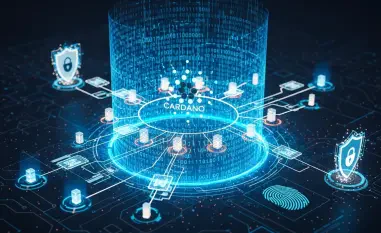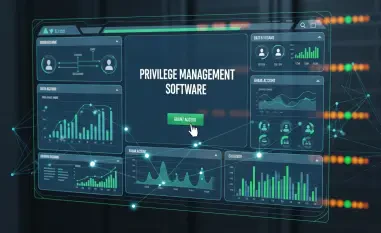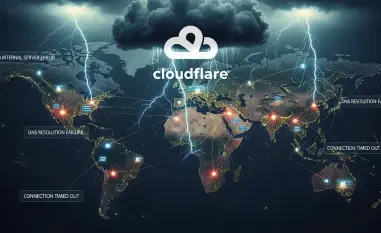Introduction to Mexico’s Cybersecurity Landscape
In a digital era where mobile devices are integral to daily life, Mexico faces an alarming surge in cyber threats, with mobile malware attacks becoming a pervasive challenge that threatens both individual users and economic stability. Recent data reveals a staggering 70% increase in such attacks over recent years, positioning the nation as a prime target in Latin America, and resulting in millions in losses already recorded. What measures are being taken to combat this invisible yet potent danger, and how is Mexico positioning itself in the global fight against cybercrime?
The urgency of this issue cannot be overstated, as malicious actors exploit vulnerabilities at an unprecedented pace, often breaching systems in under 24 minutes. With the nation grappling with significant economic impacts, the need for robust cybersecurity frameworks has never been clearer. This report delves into the strategies, policies, and international collaborations shaping Mexico’s response to mobile malware threats, offering a comprehensive look at the current state of digital defense.
The Growing Cybersecurity Crisis in Mexico
Mexico stands at a critical juncture as cyber threats, particularly mobile malware, escalate at an alarming rate. The country has witnessed a dramatic rise in attacks, driven by the widespread adoption of mobile technology and the increasing sophistication of cybercriminals. This surge has placed immense pressure on both public and private sectors to safeguard digital infrastructure against relentless adversaries.
Projections indicate that Mexico is the second most targeted country in Latin America for cyber threats, a statistic that underscores the urgency for national action. The economic toll is equally staggering, with over 6 million cyber fraud incidents reported in recent years, resulting in losses exceeding MX billion, equivalent to roughly US.082 billion. These figures highlight cybersecurity as a national priority, demanding immediate and innovative solutions.
The rapid evolution of attack methods further complicates the scenario, as hackers exploit gaps in security with unprecedented speed. With breaches occurring in mere minutes, the window for response is critically narrow, amplifying the need for advanced detection and prevention mechanisms. Addressing this crisis requires not only technological advancements but also a cultural shift toward greater awareness and preparedness.
Key Trends and Data on Mobile Malware Threats
Emerging Cyber Threat Patterns
The landscape of mobile malware in Mexico is marked by rapidly evolving tactics that challenge even the most prepared defenses. Cybercriminals are leveraging advanced techniques, often executing breaches in as little as 24 minutes, leaving organizations with minimal time to react. This speed, combined with the anonymity of digital attacks, creates a formidable barrier to effective countermeasures.
A significant driver of this vulnerability is the growing reliance on mobile devices for personal and professional use, which expands the attack surface for malicious actors. Emerging technologies, while beneficial, often introduce new risks as they outpace the development of corresponding security measures. This dynamic has led to an environment where users and businesses alike are increasingly exposed to sophisticated threats.
Additionally, the tactics employed by cybercriminals are becoming more deceptive, often involving social engineering and tailored malware designed to bypass traditional defenses. As mobile banking and e-commerce continue to grow, so too does the incentive for attackers to target these platforms. Understanding these patterns is crucial for developing proactive strategies to mitigate risks in an ever-changing digital arena.
Statistical Insights and Future Projections
Current data paints a grim picture of Mexico’s cybersecurity challenges, with millions of cyber fraud incidents contributing to substantial economic damage. The financial impact, surpassing MX$20 billion in recent years, reflects not only direct losses but also the broader cost of diminished trust in digital systems. These numbers serve as a stark reminder of the scale of the problem facing the nation.
Looking ahead, experts anticipate a continued upward trajectory in mobile malware attacks over the next few years, potentially intensifying the strain on digital security frameworks. From 2025 to 2027, the frequency and complexity of these threats are expected to grow, necessitating a fortified approach to defense. Such projections signal a pressing need for investment in both technology and education to curb future impacts.
The implications of these trends are profound, as unchecked cybercrime could hinder Mexico’s digital transformation and economic growth. Without significant intervention, the country risks falling further behind in the global cybersecurity race. These insights emphasize the importance of preemptive measures to protect critical infrastructure and maintain public confidence in digital ecosystems.
Challenges in Combating Mobile Malware
Mexico faces formidable obstacles in its battle against mobile malware, with early detection remaining a persistent issue. Many attacks go unnoticed until significant damage is done, largely due to inadequate monitoring systems and the sheer speed of breaches. This gap in initial response capabilities leaves both individuals and organizations vulnerable to escalating threats.
Resource constraints and technological limitations further exacerbate the problem, as many entities lack access to cutting-edge tools needed to counter sophisticated malware. Additionally, the absence of comprehensive incident tracking systems hinders the ability to analyze and learn from past attacks. These shortcomings highlight a critical need for enhanced infrastructure and expertise to bolster national defenses.
To address these hurdles, strategic investments in advanced detection technologies and public awareness campaigns are essential. Encouraging a culture of cybersecurity through education can empower users to recognize and report threats early. Furthermore, fostering collaboration across sectors could help pool resources and knowledge, creating a more resilient front against cybercrime.
Mexico’s Policy and Regulatory Response to Cyber Threats
In response to the mounting cyber threats, Mexico has taken significant steps to strengthen its regulatory framework, notably through the establishment of the Cybersecurity General Directorate under the Agency of Digital Transformation and Telecommunications (ATDT). This body aims to centralize efforts and provide a unified approach to tackling digital security challenges. Such initiatives reflect a commitment to building a safer online environment.
Industry leaders, including Claudia Escoto of Alianza Mexico Ciberseguro, have called for comprehensive legislation to establish a robust governance structure for cybersecurity. The push for formalized policies is seen as a critical step in ensuring accountability and consistency across sectors. A well-defined legal framework could also facilitate better coordination between government and private entities in addressing threats.
Public-private partnerships are playing a pivotal role in this landscape, with initiatives like the Mexican Association of Information Technology Industries (AMITI) donating security credentials for government employees, set to roll out in the coming year. Compliance with international standards and localized security measures further shapes the national approach, aiming to align Mexico’s practices with global best practices while addressing unique domestic needs.
International Collaboration and the USMCA Review
Cybersecurity has emerged as a key component of international trade frameworks, particularly with the upcoming review of the United States-Mexico-Canada Agreement (USMCA). Chapter 19 of this agreement, which focuses on digital economy issues, provides a platform to address concerns like data protection and intellectual property in a collaborative manner. This integration underscores the intersection of digital security and economic policy.
The Mexican Association of Information Technology Industries (AMITI) is actively contributing to these discussions, ensuring that private sector perspectives inform negotiations. With public hearings scheduled in the United States and deadlines for Mexico to propose alternatives approaching, there is a unique opportunity to align cybersecurity priorities with trade objectives. Such alignment could enhance regional cooperation and set a precedent for future agreements.
The broader implications of embedding cybersecurity into trade policies are significant, as they promote a holistic view of economic stability in the digital age. By addressing technology supply chains and cross-border data flows alongside traditional trade concerns, Mexico can strengthen its position in the global market. This strategic focus highlights the necessity of international partnerships in building a secure digital future.
Future Outlook and Strategic Recommendations
Looking toward the horizon, Mexico’s cybersecurity landscape holds both promise and peril, with emerging technologies offering innovative solutions alongside new vulnerabilities. The potential for disruptors like artificial intelligence to either aid or undermine defenses necessitates a forward-thinking approach. Areas for growth include the development of adaptive security systems capable of evolving with threats.
Sustained collaboration between public and private sectors remains paramount, as does engagement with international allies to share knowledge and resources. Building on existing frameworks, such as those within the USMCA, can help create a cohesive regional strategy against cybercrime. This cooperative spirit is vital for addressing the transnational nature of digital threats.
Recommendations for fortifying Mexico’s defenses include prioritizing investments in early detection systems to close the gap on rapid breaches. Additionally, increasing funding for cybersecurity infrastructure and pushing for legislative reforms will provide a solid foundation for long-term security. By focusing on these strategic areas, Mexico can enhance its resilience and safeguard its digital economy for years to come.
Conclusion
Reflecting on the comprehensive analysis, it is evident that Mexico has embarked on a determined path to confront the escalating mobile malware threats through a blend of policy innovation and international cooperation. The strides made in establishing centralized cybersecurity bodies and fostering public-private partnerships mark significant progress in a challenging domain. Yet, persistent issues like delayed detection and resource gaps underscore the battles that lie ahead.
Moving forward, actionable steps emerge as critical to sustaining momentum, such as accelerating the adoption of cutting-edge detection technologies to preempt attacks. Strengthening legislative frameworks offers another avenue to ensure accountability and clarity in national efforts. Moreover, deepening ties with global partners through agreements like the USMCA promises to elevate Mexico’s standing in the fight against cybercrime, paving the way for a more secure digital future.













